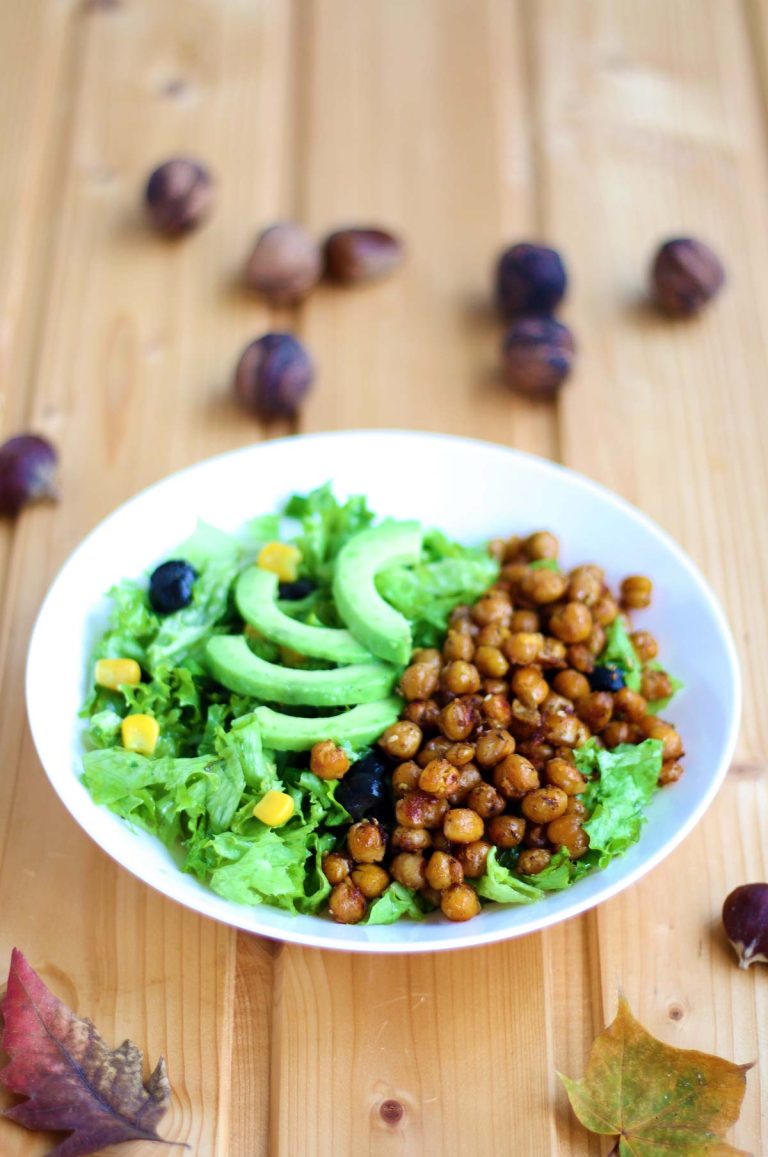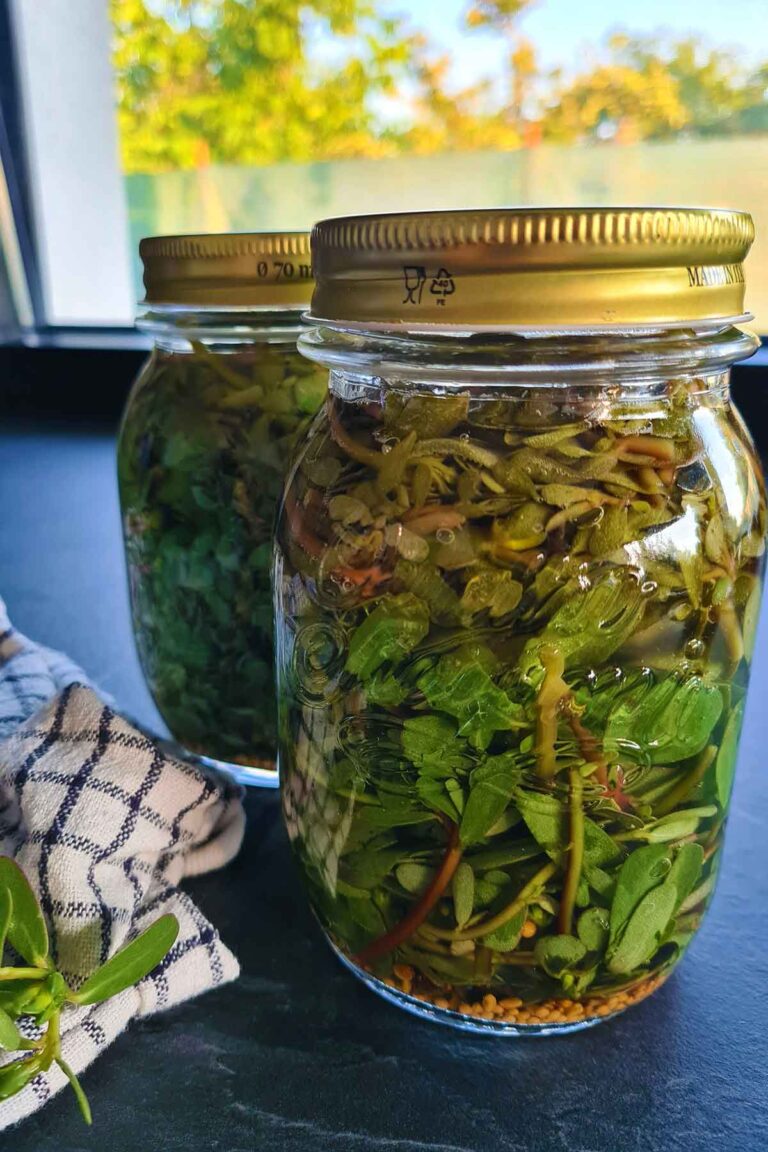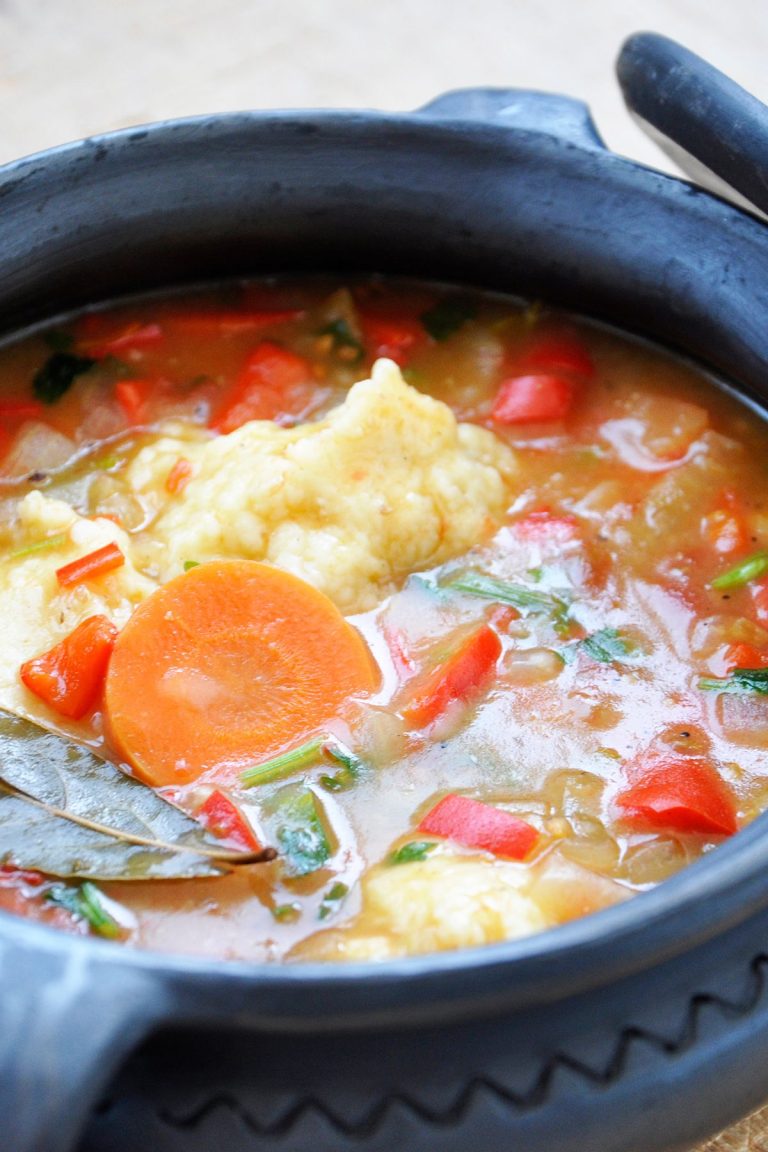What’s Kimchi? | A Guide to the Tasty Korean Fermented Dish
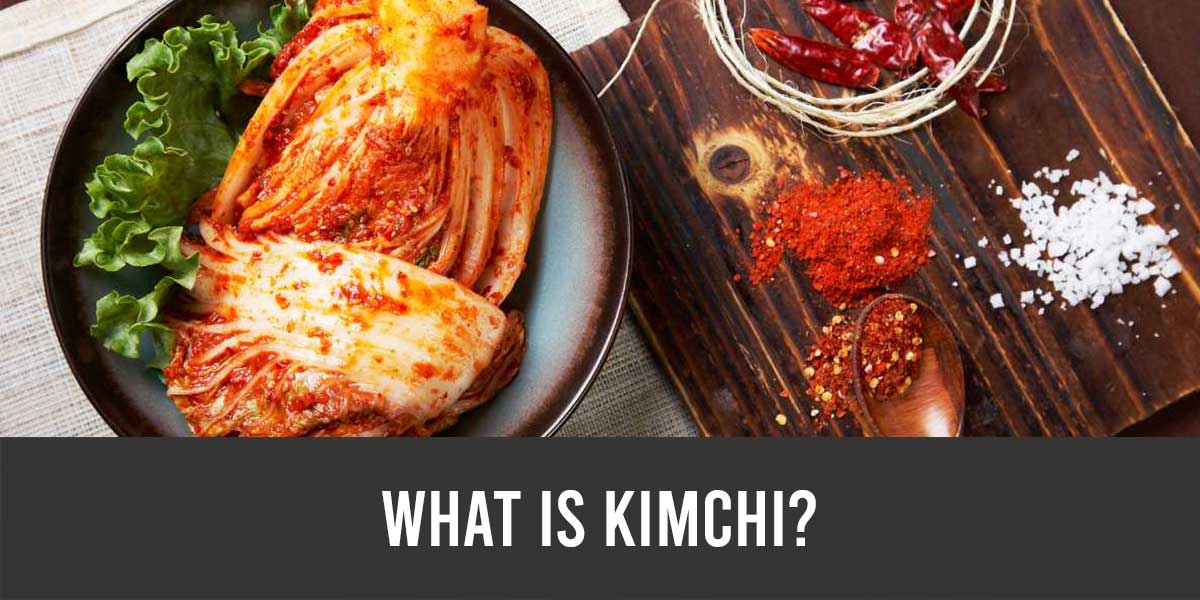
Find out what’s kimchi and explore the history, cultural significance, and health benefits of this Korean fermented delight, as well as tips for making it at home. Whether you’re a fan of bold and spicy flavours or are curious about this unique food, this guide is a must-read for anyone interested in Korean cuisine.
Hey there! Today I’ll share with you what I learned about kimchi while doing some research on what natural probiotics I can add to my diet in order to heal my gut. I’m a huge fan of sauerkraut and my mother-in-law always makes more than enough every year, but I wanted to try something new as well.
As a fan of both healthy and delicious food, I’d like to introduce you to kimchi. Kimchi is a traditional Korean dish made from fermented cabbage or other vegetables mixed with a spicy, tangy sauce. It’s not only incredibly tasty, but also good for you. In this guide, I’ll tell you everything you need to know about kimchi.
What’s Kimchi?
Kimchi is a traditional Korean side dish made from fermented vegetables, most commonly napa cabbage, radishes, and scallions, with spices and seasonings such as chili pepper flakes, garlic, ginger, and fish sauce .

A Brief History of Kimchi
Kimchi has been a staple in Korean cuisine for centuries. It’s believed to have originated over a thousand years ago, during a time when refrigeration was not available. To preserve food during the winter months, people would ferment vegetables such as cabbage, turnips and radishes. Over time , kimchi evolved into the delicious dish we know and love today, with different regions in Korea developing their own unique recipes.
The Health Benefits of Kimchi
Kimchi is packed with vitamins and nutrients that are essential for a healthy diet. It’s high in vitamins A, B, and C, as well as minerals such as iron and calcium. Additionally, kimchi is a great source of probiotics, which are beneficial bacteria that help keep our gut healthy. This is the main reason people choose to consume kimchi on a regular basis, apart from its delightful taste. Some studies have even shown that kimchi can improve digestion, boost the immune system, and lower cholesterol levels.
As a probiotic, kimchi contains a host of beneficial bacteria and yeast that are important for gut health.
When kimchi is made, the lactic acid bacteria in the ingredients consume the sugars in the vegetables and produce lactic acid. This process of fermentation helps to preserve the food and also create a probiotic-rich environment that can boost digestive health.
Studies have shown that consuming probiotic-rich foods like kimchi can help to balance the gut microbiome, which is the collection of bacteria and other microorganisms that live in the gut. This balance is important for overall health, as a healthy gut microbiome has been linked to improved digestion, better immunity, and reduced risk of chronic diseases like obesity, type 2 diabetes, and inflammatory bowel diseas e.
So, if you’re looking for a tasty and nutritious way to support your gut health, try incorporating kimchi into your diet! Whether you enjoy it as a side dish or as an ingredient in your favorite recipes, this probiotic-rich food is a great way to add a little zing to your meals and support your health at the same time .
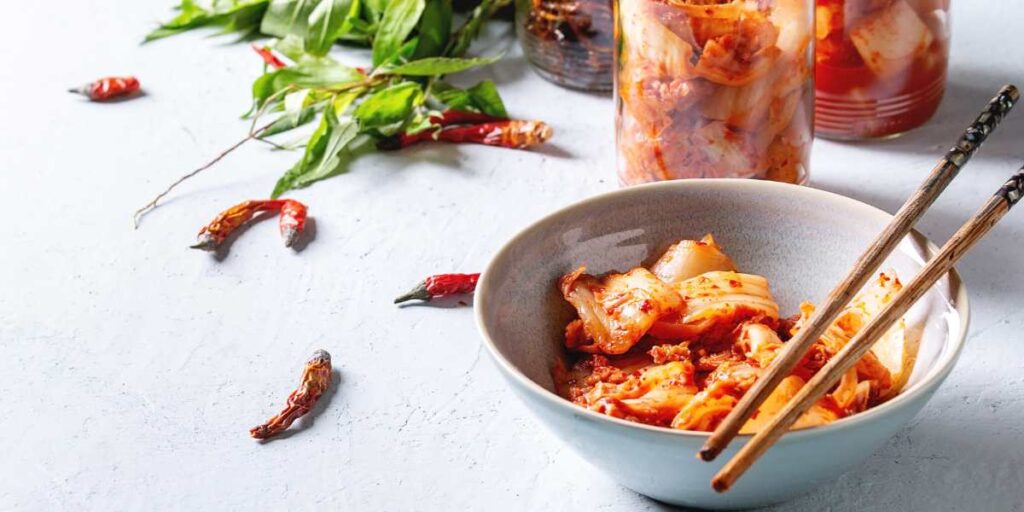
Making Kimchi at Home
Making kimchi at home is a fun and rewarding process. It’s a great way to control the ingredients and make sure your kimchi is healthy and delicious. I am looking forward to trying to make kimchi for the first time this year, I will post on the blog my attempt, but until then, here’s what you can expect. To make kimchi, you’ll need the following ingredients:
- Cabbage or other vegetables
- Salt
- Garlic
- Ginger
- Chili peppers
- Fish sauce
- Sugar
- Rice flour
- Water
The first step is to cut your cabbage or other vegetables into bite-sized pieces and sprinkle with salt. Let the vegetables sit for several hours to soften and release their water. Next, mix together the remaining ingredients to make the spicy, tangy sauce. Add the sauce to the vegetables, mix well, and transfer to a jar or container. Let the kimchi ferment for several days or until it reaches your desired level of tanginess.
Serving and Eating Kimchi
Kimchi can be enjoyed on its own or as a side dish with rice and other foods. It’ s a popular ingredient in Korean cooking and can be used in soups, stews, and stir-fries. Additionally, kimchi is a great way to add flavor and nutrients to other dishes, such as tacos, sandwiches and eggs.
Recipes with kimchi for your inspiration
Here are some of my favorite recipes with kimchi you can try:
- Kimchi Fried Rice – A tasty and easy recipe that combines kimchi and rice for a flavorful and filling meal.

- Kimchi Grilled Cheese – A delicious sandwich made with kimchi, cheese, and bread that provides the perfect balance of sweet, salty, and tangy flavors.

- Kimchi Soup – A comforting soup that uses kimchi as a base and is packed with vegetables and meat for a warm and satisfying meal.
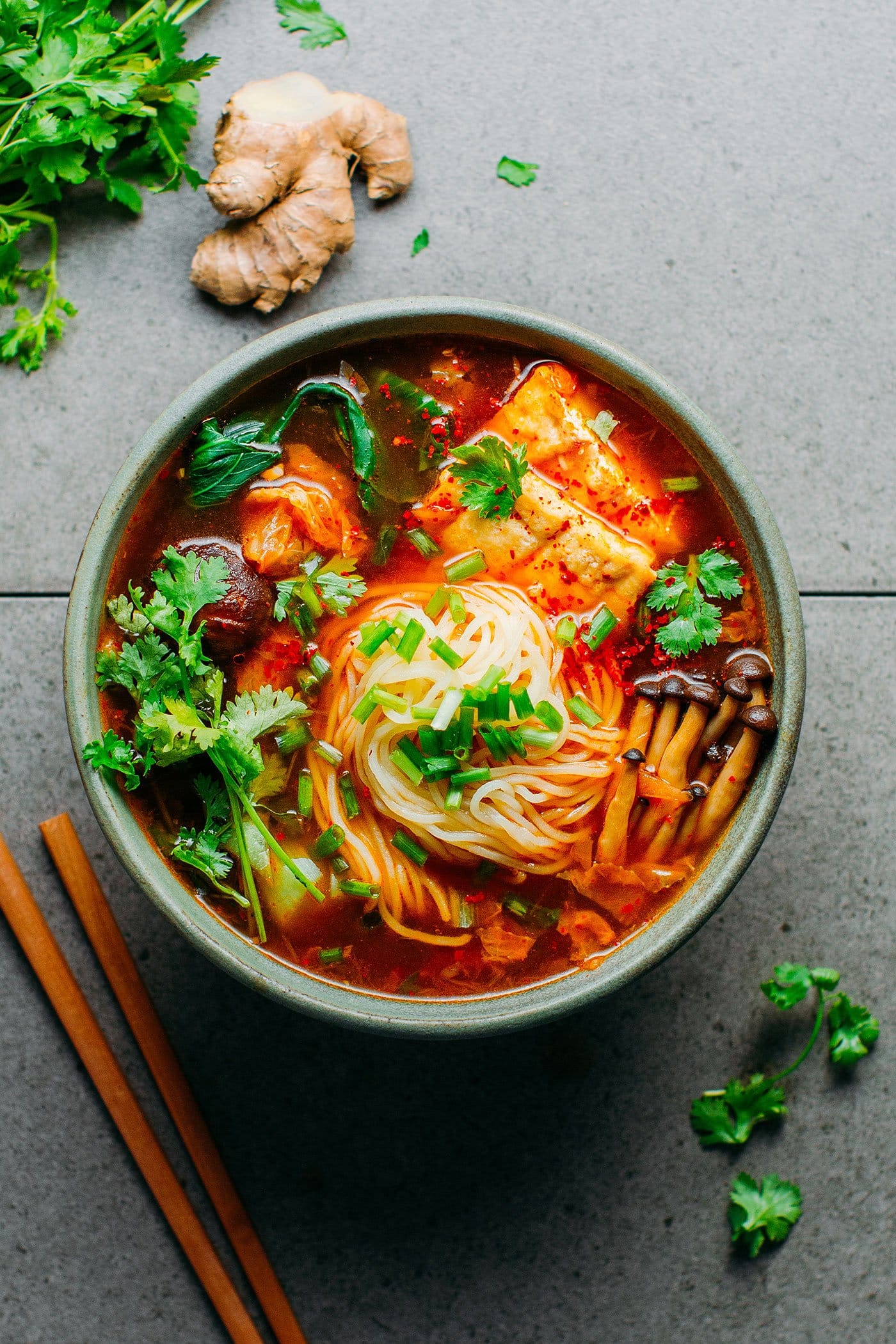
- Kimchi Pancakes – A Korean-style pancake that’s made with kimchi and flour, and served with a variety of sauces and topping s.
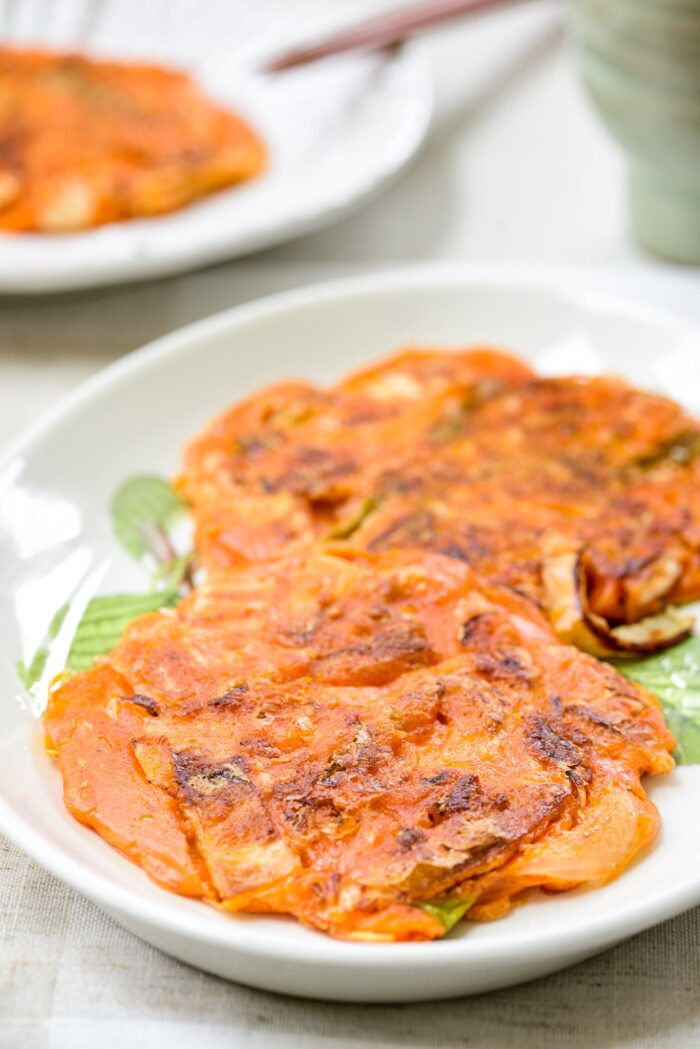
- Kimchi Stew – A hearty stew that features kimchi as the main ingredient and is made with beef, vegetables and noodles.
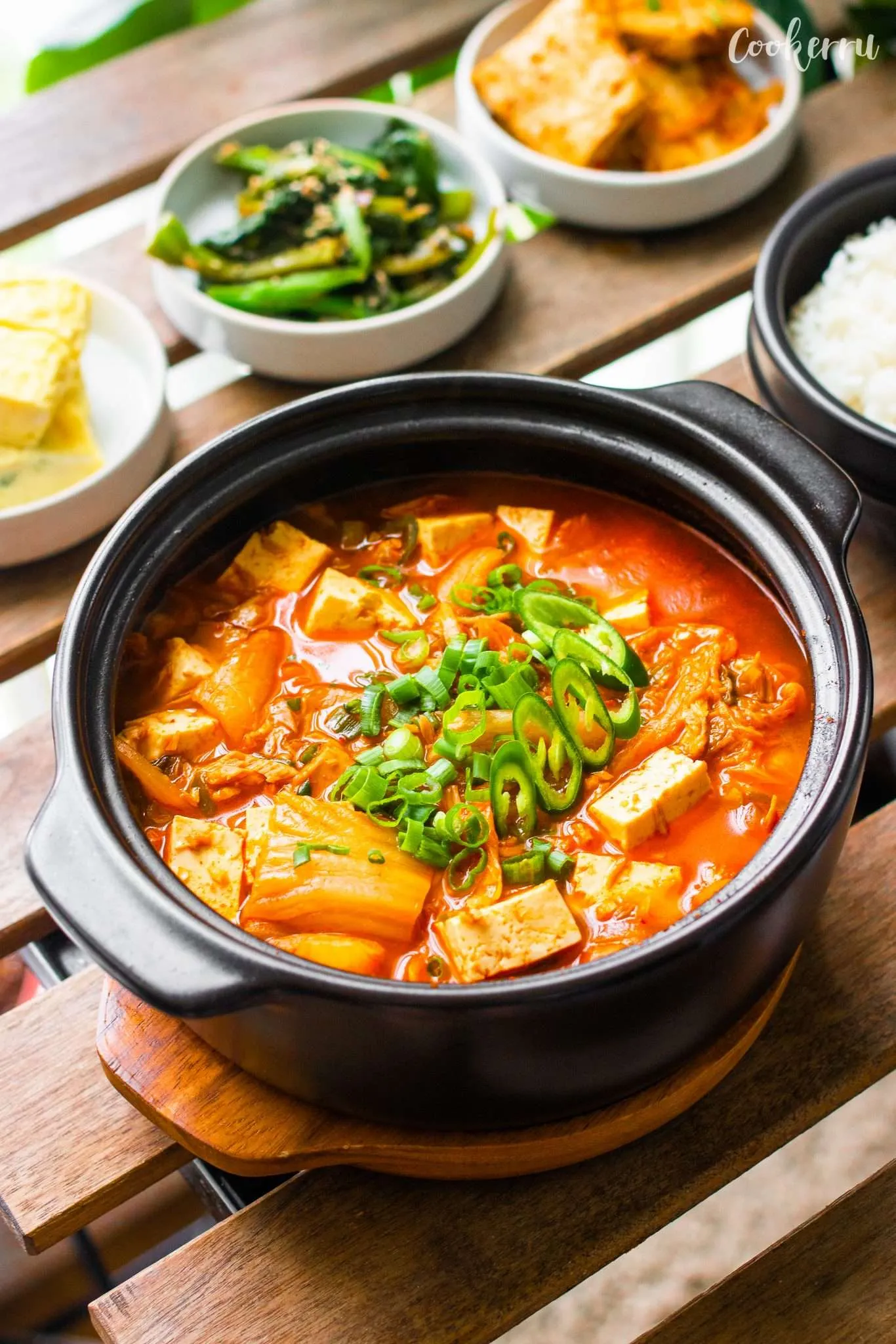
- Kimchi Pasta – A flavorful pasta dish that uses kimchi as the main sauce ingredient, along with garlic, chili flakes, and ginger.
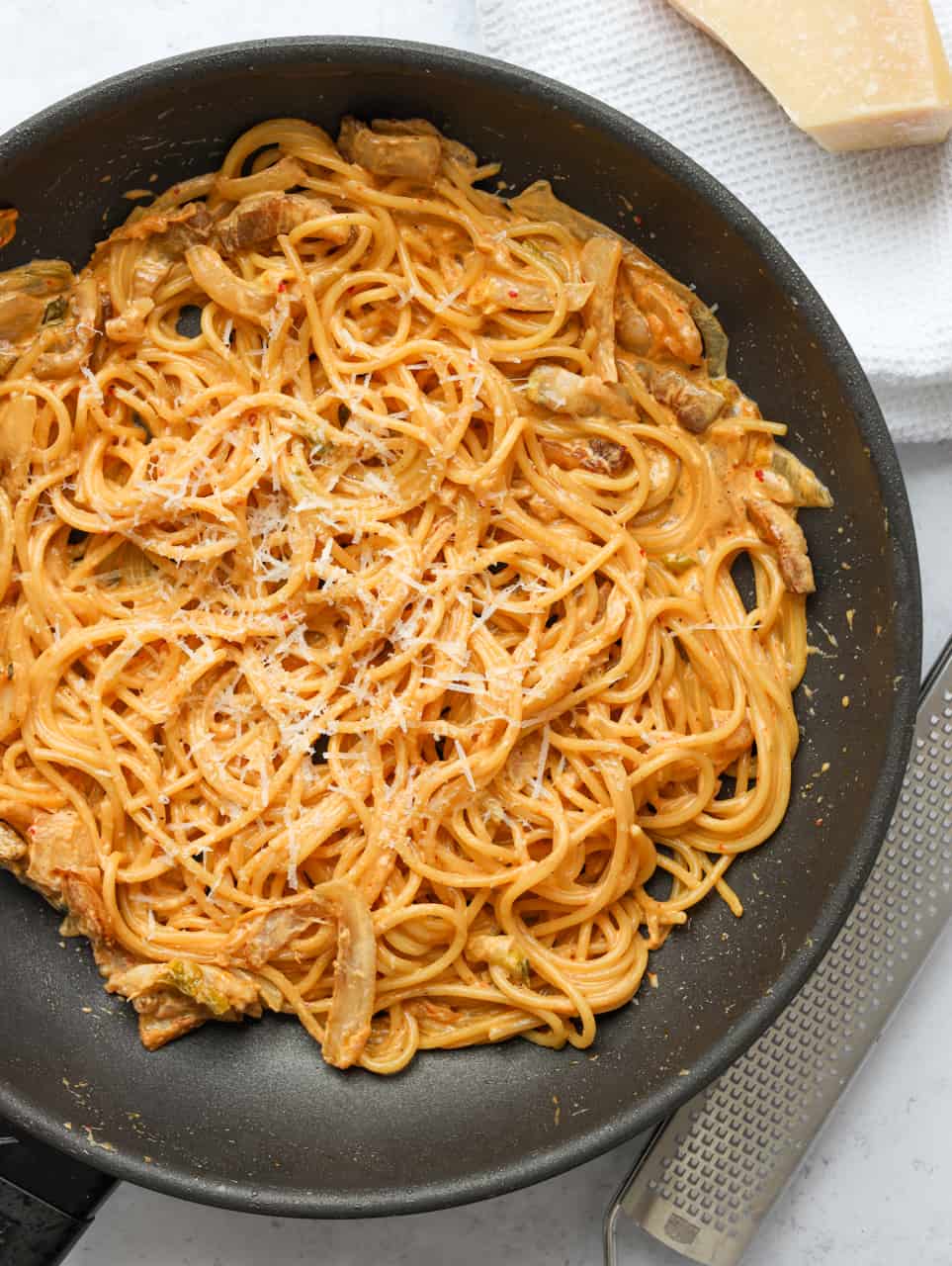
These are just a few examples of popular kimchi recipes. Feel free to get creative and add your own unique twist to these dishes!
Frequently asked questions about kimchi
Kimchi varies in level of spiciness, but it is generally known for its bold, tangy and hot flavor.
Kimchi is considered a healthy food due to its probiotic content and high levels of vitamins and minerals. It is also low in calories and rich in fiber.
Homemade kimchi can last several months if stored properly in the refrigerator, while store-bought kimchi has a shorter shelf life and should be consumed within a few weeks.
Kimchi is a rich source of vitamins A, C and K, fiber, antioxidants, and probiotics. It has been shown to improve digestion, boost immunity, and lower the risk of certain diseases.
Yes, kimchi can be made with a variety of different vegetables, including carrots, cucumbers, radishes, and green onions.
Yes, kimchi can be made without seafood ingredients like fish sauce or oyster sauce, making it suitable for vegetarians and vegans.
Traditionally, no, as it contains fish sauce or oyster sauce, but you can simply skip it or look for a store-bought vegan alternative.
When kimchi is cooked, the heat can kill some of the beneficial bacteria, so it may not provide as much of a probiotic benefit as raw kimchi. However, cooking kimchi can still provide some health benefits, as it retains its other nutrient content, such as vitamins, minerals, and antioxidants.
Kimchi is not a natural antibiotic, but it is believed to have antibacterial properties due to the fermented ingredients and high levels of lactic acid bacteria. The lactic acid bacteria in kimchi has been shown to help improve gut health and boost the immune system, which can help fight off infections.
In conclusion, kimchi is a delicious and healthy food that’s been enjoyed for centuries in Korean cuisine. Whether you’re a fan of spicy food or just looking to add more probiotics to your diet, kimchi is definitely worth trying. So why not give it a go and make your own kimchi at home today? I promise you won’t be disappointed!
If you make this, please leave a review and rating if you liked this recipe! ★★★★★

